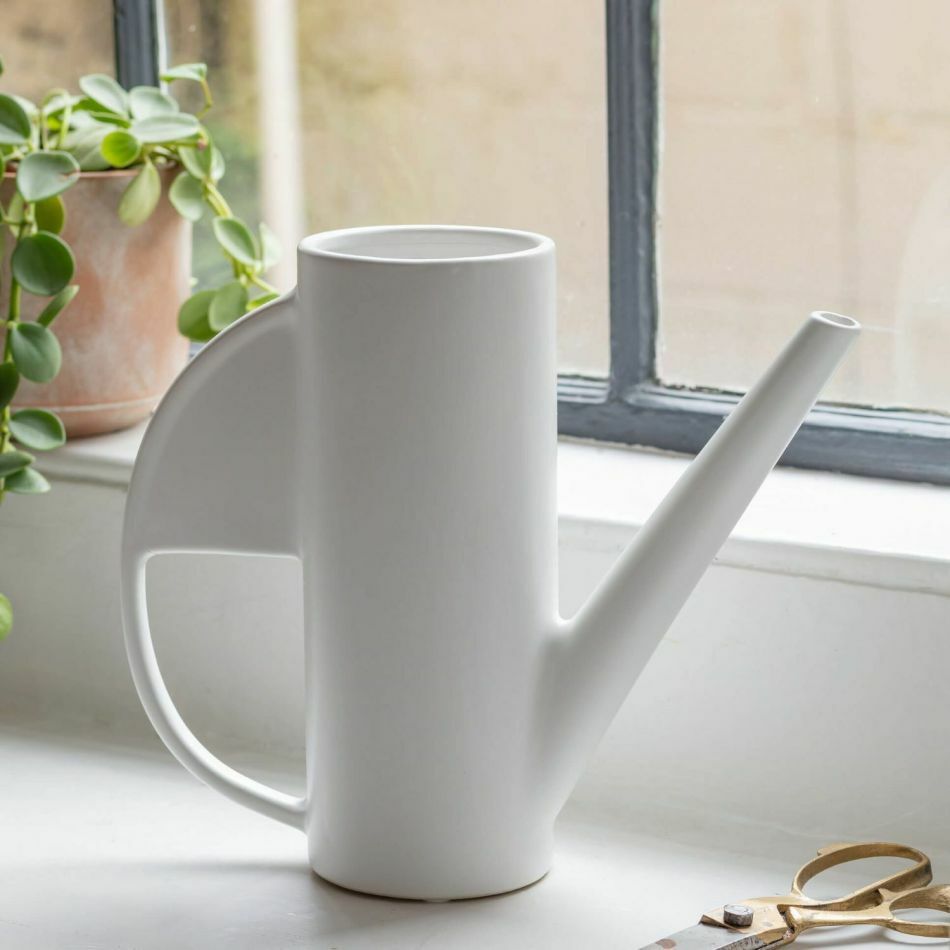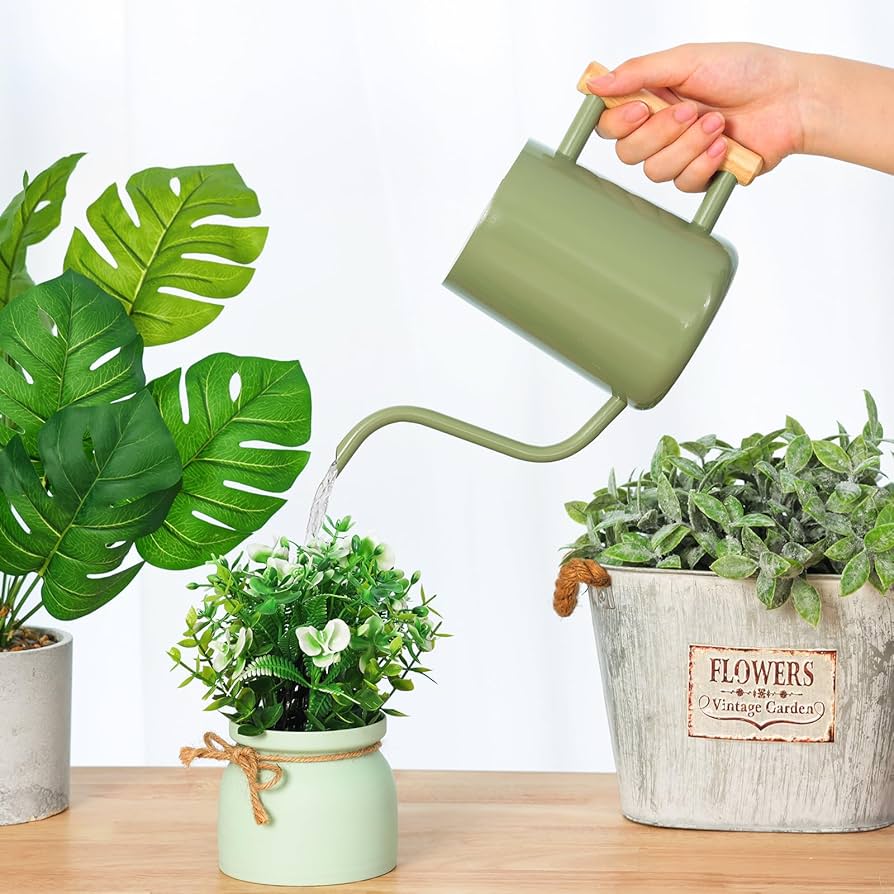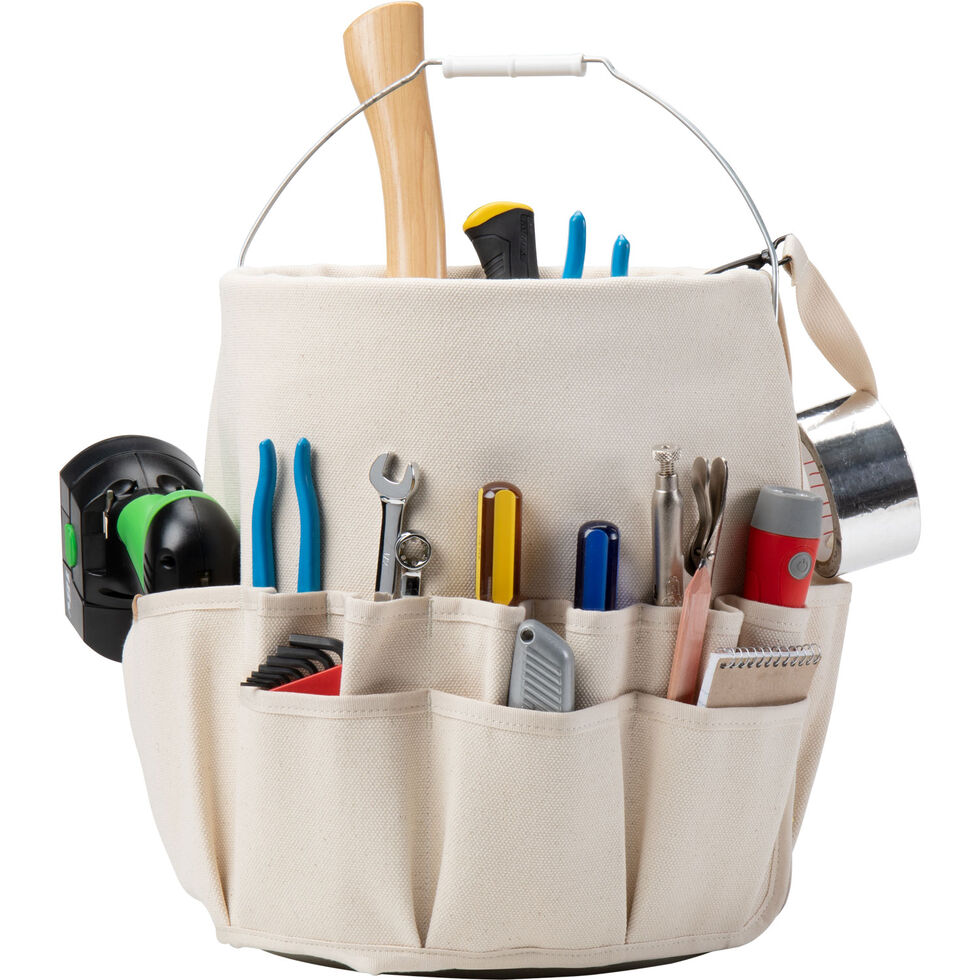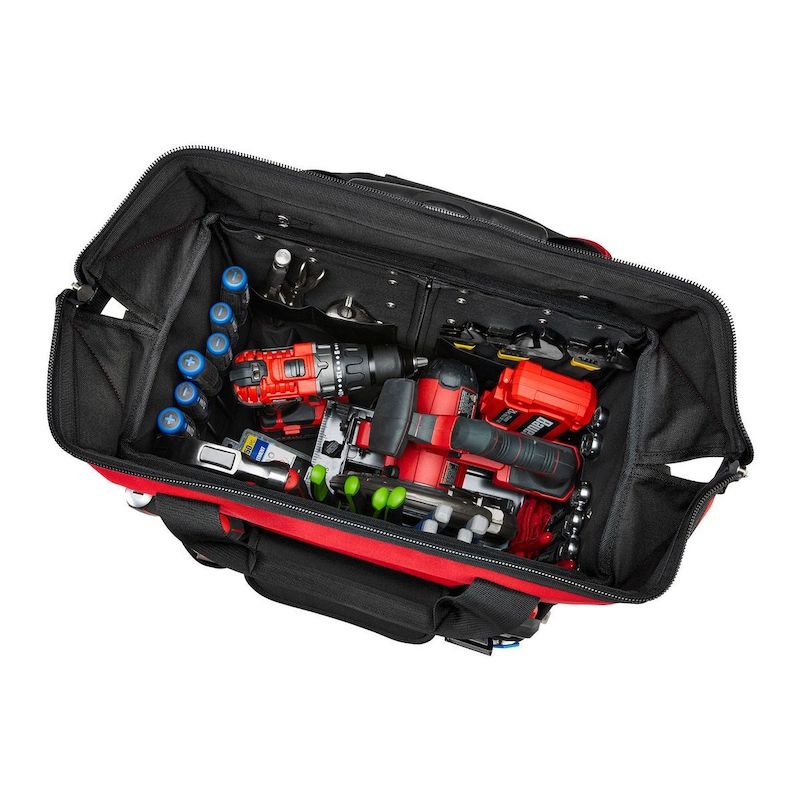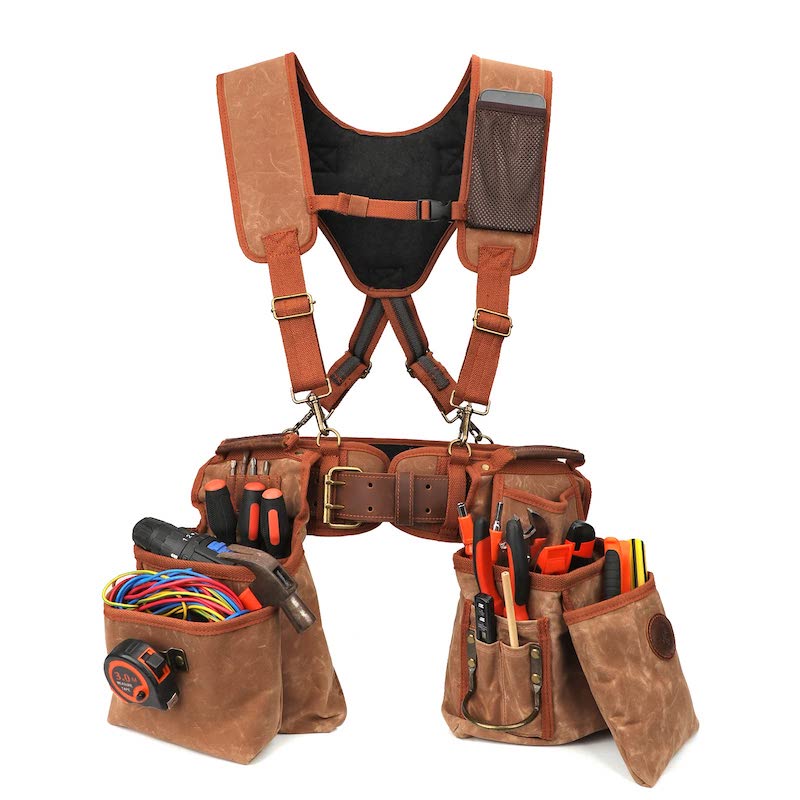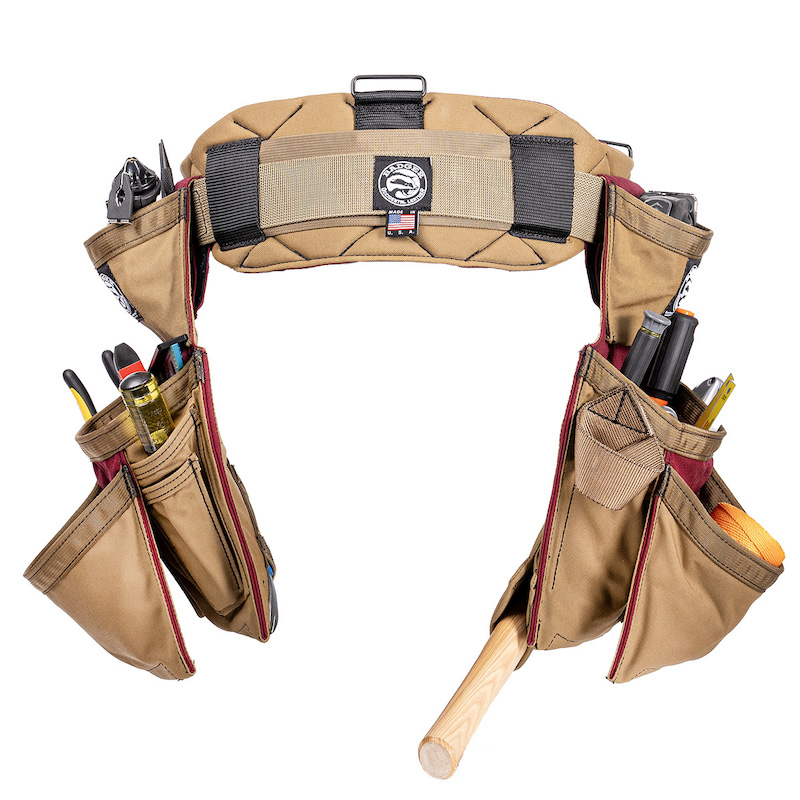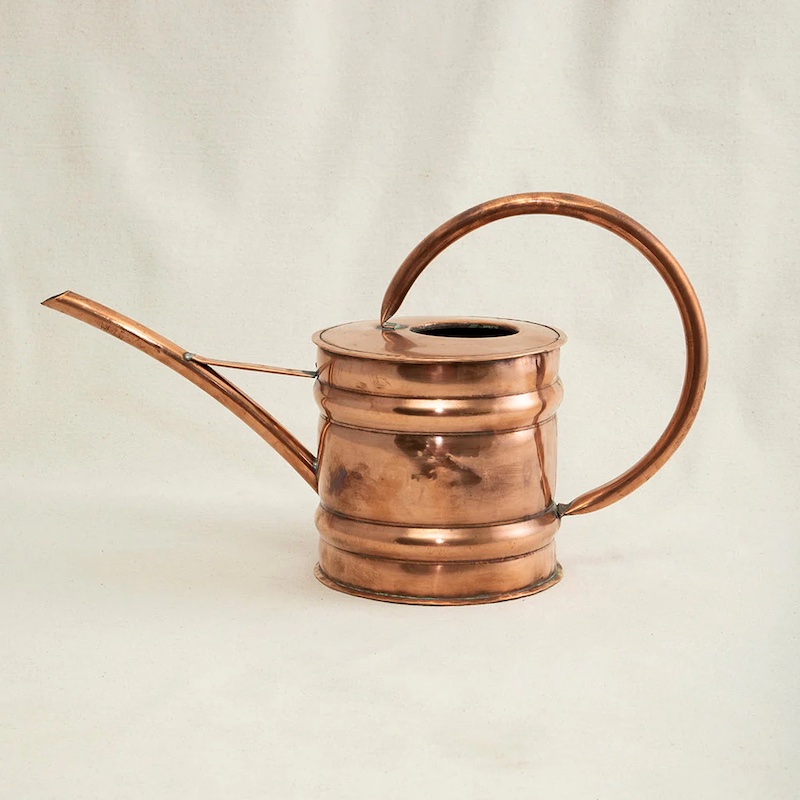
Watering Can with Long Spout: Ideal for Precision Plant Hydration
The Benefits of a Long Spout in Watering Cans
Using a watering can with a long spout offers multiple advantages for gardeners and plant enthusiasts. First and foremost, it allows precise water delivery. The long spout reaches easily into tight spots, ensuring that water goes directly to the plant’s base, without splashing or spilling on the leaves. This is crucial for plants susceptible to leaf diseases when wet.
Additionally, a long spout helps control the water flow, offering a gentle shower that doesn’t disturb the soil or damage delicate plants. This feature is especially beneficial for young seedlings or fragile flowers that require a soft touch.
Another key benefit is reduced strain on the gardener’s body. With a long spout, there’s no need to stretch or bend awkwardly to water plants in hard-to-reach areas. This ergonomic advantage means you can maintain a comfortable posture while watering, which is notably helpful for those with mobility issues.
Investing in a watering can with a long spout also promotes water conservation. By directing water exactly where it’s needed, waste is minimized. Every drop counts, especially in regions with water scarcity or for eco-conscious gardeners aiming to reduce their environmental footprint.
In summary, a long spout watering can offers precision, control, ergonomic comfort, and promotes conservation, making it an ideal tool for any gardening task.
Key Features to Look for in a Long Spout Watering Can
When shopping for a watering can with long spout, there are several key features to consider. These features not only add to the convenience of watering your plants but also ensure longevity and efficiency of the tool. Here’s what to look out for:
- Spout Length and Shape: Opt for a watering can with a spout that’s long enough to reach your plants comfortably. A curved or angled spout can help in targeting water right at the roots. Some spouts come with a detachable rose, which is great for gentle watering.
- Material Durability: Watering cans are made from various materials like plastic, galvanized steel, or copper. Each has its pros and cons. Metal cans are often more durable than plastic but may be heavier.
- Comfortable Handle Design: A good grip makes watering less of a chore. Look for a handle that’s easy to hold and balances the can when it’s full. An ergonomic design can reduce hand fatigue.
- Capacity: Choose the size based on your garden’s needs. A larger capacity means fewer trips to refill, but also a heavier can to carry.
- Water Control: A watering can with a precision spout and adjustable flow is crucial for controlling water output. This is especially important for delicate plants or seedlings.
- Aesthetic Appeal: While function is key, the design of the can may be important to you. Many gardeners prefer a watering can that looks good in their garden space.
Keep in mind these features to find a watering can with long spout that is not only a functional tool for your gardening needs but also a pleasure to use.
Top Rated Long Spout Watering Cans on the Market
When it comes to finding the best watering can with a long spout, there are several top-rated options to consider. These products stand out for their quality, functionality, and customer satisfaction. Here’s a rundown of some standout watering cans that have garnered positive reviews:
- The Classic Gardener’s Choice: This high-quality watering can combines durability with a sleek design. The long, slender spout provides excellent reach, ideal for watering hanging baskets or back-of-border plants. It often features a sturdy metal construction and a comfortable wooden handle.
- The Modern Minimalist: If you prefer a more contemporary look, this watering can might be for you. It’s made of lightweight materials and has a long, clean-lined spout. Its elegant design is perfect for minimalists who also want functionality.
- The Eco-Friendly Option: For those who are environmentally conscious, an eco-friendly model could be the best pick. Often crafted from recycled materials, these watering cans with long spouts are designed with sustainability in mind.
- The Heirloom Quality Can: Some gardeners invest in a watering can that will last for generations. Heirloom-quality cans are typically made from durable metals like copper and are known for their long, gracefully curved spouts.
- The Budget-Friendly Find: You don’t have to spend a lot to get a high-performing long spout watering can. There are budget-friendly models that offer a good balance between cost and quality. They might be less robust but can still offer a good reach and comfortable handling.
Before making a purchase, consider the specific needs of your garden and balance them with the reviews of avid gardeners. Look for capacity, ease of filling, balance, and the quality of the material. With the right watering can with a long spout, you can make gardening easier and more enjoyable.
Caring for Indoor Plants with a Long Spout Watering Can
Indoor plants add beauty and life to our homes, but they require careful watering to thrive. A watering can with a long spout is an excellent tool for maintaining the health of your indoor greenery. Here are reasons why it should be part of your plant care routine:
- Direct Water to the Root Zone: The long spout lets you water the soil directly, avoiding the leaves and stem. This helps prevent leaf rot and disease.
- Avoid Overwatering: Using a long spout watering can gives you better control over the amount of water. This means less risk of overwatering, which can harm or even kill plants.
- Reach Hanging and Tall Plants: The extended reach of a long spout makes it easy to water hanging baskets or tall plants without a step stool.
- Keep Leaves Dry: Many indoor plants, like African violets, dislike wet leaves. The precise pour of a long spout can keeps leaves dry and happy.
- Minimize Disturbance to Soil: A gentle water flow maintains soil structure. This is crucial for delicate roots and helps prevent erosion in the pot.
- Watering with Precision: Especially for plants in narrow or crowded spaces, precision is key. The long spout allows you to deliver water exactly where it’s needed.
When caring for indoor plants, always check the soil moisture before watering. Use your long spout watering can to give a thorough drink when the top inch of soil is dry. This tool, combined with the right watering technique, ensures that your indoor plants grow vibrant and strong.
The Importance of Watering Techniques for Different Plants
The right watering techniques are vital for plant health. Different plants need different amounts of water and methods of delivery. Using a watering can with long spout helps apply these techniques effectively. Let’s look at some key tips:
- Understand Your Plant’s Needs: Every plant species has unique watering requirements. Some need moist soil at all times, while others thrive with dry periods.
- Check Soil Moisture: Before watering, always check the soil. Use your finger or a moisture meter.
- Water Deeply but Infrequently: This encourages roots to grow deep and strong. It’s often better than frequent shallow watering.
- Use Room Temperature Water: Cold water can shock roots, while warm water can harm them. Room temperature is best.
- Time Your Watering: Morning is usually the best time to water plants. It gives them time to absorb it before the heat of the day.
- Adjust for Seasons and Weather: Plants need less water in winter and more in dry, hot weather. Watch for these changes and adjust how you water.
- Focus on the Root Zone: With a long spout, you can deliver water straight to the roots. This is where plants absorb water and nutrients.
Using these techniques with a watering can with long spout will help your plants flourish. Always remember, overwatering can be as harmful as under-watering. Be observant and responsive to your plants’ signals for the best results.
Long Spout vs. Short Spout: Pros and Cons
When you’re choosing between a watering can with a long spout and one with a short spout, it’s crucial to weigh the pros and cons of each. Here’s a quick rundown to help you decide which type suits your gardening needs best.
Pros of Long Spout Watering Cans:
- Reach: They extend your reach, making it easier to water plants that are far away or hard to access.
- Precision: The design allows for targeted watering, reducing waste and ensuring water gets directly to the plant’s roots.
- Safety for Leaves: They help keep leaves dry, preventing leaf diseases that can arise from moisture.
- Ergonomics: They prevent strain by eliminating the need to stretch or bend over your plants.
Cons of Long Spout Watering Cans:
- Weight: When filled with water, the can may become heavier and harder to manage, especially with a very long spout.
- Storage: They require more space to store due to their size.
- Price: Sometimes they can be more expensive than short spout alternatives.
Pros of Short Spout Watering Cans:
- Control: They can offer greater control and balance when watering, useful for small or tight spaces.
- Portability: Easier to carry and handle, making them ideal for quick watering jobs or for people with less strength.
- Cost: They tend to be more affordable and are a good basic option for simple watering tasks.
Cons of Short Spout Watering Cans:
- Limited Reach: It’s harder to water plants that are not easily accessible.
- Risk of Overwatering: Focused, heavy flow may lead to overwatering or soil disturbance.
- Less Precision: Without a long spout, it’s more challenging to avoid getting water on plant leaves or missing the root zone.
In conclusion, a long spout watering can offers greater precision and reach but may be more cumbersome and expensive. On the other hand, a short spout is more manageable and afforable but lacks the precision and extension of a long spout. Your choice should depend on your garden layout, the types of plants you have, and your personal comfort and ability to manage the can.
Enhancing Your Gardening Experience with the Right Watering Can
Choosing the perfect watering can with long spout can greatly enhance your gardening experience. Here’s how to ensure you get the most out of this essential tool:
- Match the Can to Your Needs: Consider the size and type of your garden. Pick a can that holds enough water for your plants while still being easy to carry.
- Look for Comfort: A can with an ergonomic handle can make watering less tiring. This is important if you spend a lot of time gardening.
- Check for a Removable Rose: Some long spout cans come with a detachable watering rose. This is useful for switching between a gentle shower and a more direct stream.
- Consider Balance: When full, the can should be balanced. A well-designed can won’t tip over easily and helps prevent water wastage.
- Ease of Use: Make sure the can is simple to fill, carry, and pour. Avoid cans that are awkward to handle or pour from.
- Opt for Durability: A durable watering can with long spout is a good investment. It will last for many seasons, saving you money in the long run.
By paying attention to these factors, you can make watering your garden a more enjoyable and effective task. The right can help you care for your plants precisely and with ease.
Innovative Designs in Long Spout Watering Cans
Watering can designers are always looking for ways to improve function and style. Innovative designs in watering cans with long spouts bring new levels of convenience and efficiency to gardening. Here are some trends in design to look out for:
- Collapsible Spouts: Some watering cans now feature spouts that can be collapsed or telescoped. This makes storage easier without sacrificing reach.
- Weight Distribution: Newer models focus on an even weight distribution. They make the can feel lighter and easier to carry, even when full.
- Ergonomic Triggers and Grips: Watering cans are getting more ergonomic. Triggers and contoured grips help control water flow and reduce hand fatigue.
- Integrated Measuring Scales: For precise plant care, some cans have scales to measure water volume. This helps you give each plant the right amount of water.
- Dual Handles: A top handle paired with a side handle offers better control. This design helps when tipping the can to pour.
- Fashion-forward Colors and Patterns: Today’s cans come in a range of colors and patterns. They can blend with your garden’s aesthetic or stand out as a statement piece.
- Self-Watering Systems: Some long spout cans have a self-watering feature. They drip-feed plants a consistent water supply, perfect for when you’re away.
These innovative designs in watering cans with long spouts combine practicality with visual appeal. They make gardening tasks not just easier, but also more enjoyable. Look for these features next time you’re in the market for a new watering can.
Tips for Maintaining Your Long Spout Watering Can
To keep your long spout watering can in top shape, follow these easy maintenance tips:
- Rinse After Use: Always rinse out your watering can after use. It prevents buildup and clogs.
- Store Properly: Keep your can in a dry place to avoid rust and damage.
- Check for Leaks: Inspect your can regularly for any holes or cracks. Patch them up quickly.
- Handle with Care: Be gentle with your can. Rough handling can lead to dents and damage.
- Clean the Spout: Ensure the spout is free from debris. Use a brush to clear blockages.
- Dry Thoroughly: After cleaning, dry your can well to prevent rust, especially if it’s metal.
- Use Mild Detergents: If deep cleaning is needed, use mild soaps to protect the finish.
Proper care will extend your watering can’s life and keep it functioning for years. These tips use common household items and take little time, making them easy to follow. Plus, they ensure your watering can continues to assist you in nurturing your garden with precision.
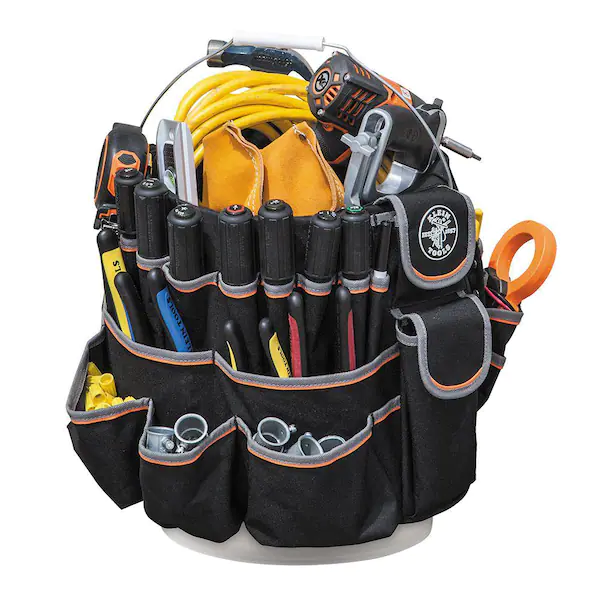
The Guide to the Bucket Tool Bag: Everything You Need to Know
Introduction
A bucket tool bag is a versatile and practical solution for carrying and organizing tools and supplies for various applications. These bags are specifically designed to fit over a standard five-gallon utility bucket, providing a sturdy and portable storage solution. They are popular among home DIYers, contractors, and professionals in various trades for their convenience and functionality.
In the world of construction and home improvement, having the right tools at your disposal is essential. Whether you’re a professional tradesperson or a DIY enthusiast, having a reliable and organized way to transport your tools can make all the difference in the efficiency and success of your projects. One such solution is the bucket tool bag, a versatile and practical tool storage option that provides a convenient way to carry and access your essential tools. In this comprehensive guide, we’ll explore the various features, benefits, and uses of bucket tool bags, as well as provide expert tips on choosing the right one for your needs.
Part 1: The Benefits of Using a Bucket Tool Bag
Level 1: Versatility
Bucket tool bags are incredibly versatile and can be used in a wide range of settings, from construction sites to home improvement projects. They are designed to fit around a standard 5-gallon bucket, providing a sturdy and stable base to hold your tools while on the go. This design allows for easy access to your tools and keeps them organized and within reach at all times.
Level 2: Organization
One of the main benefits of using a bucket tool bag is the level of organization it provides. Many bucket tool bags come with multiple pockets and compartments, allowing you to store a variety of tools and accessories in an orderly manner. This makes it easy to find and retrieve the tools you need, saving time and frustration on the job.
Part 2: Features to Look for in a Bucket Tool Bag
One of the key features of a bucket tool bag is its spacious and well-organized interior. These bags typically offer a variety of pockets, loops, and compartments for organizing a wide range of tools and accessories. This includes small hand tools, power tools, fasteners, tapes, and other supplies needed for a project. The design of the bag ensures that everything is easily accessible and securely stored, reducing the time and effort required to find and retrieve specific tools.
Level 1: Durability
When choosing a bucket tool bag, it’s important to consider the durability of the materials used. Look for a bag made from high-quality, heavy-duty fabrics and reinforced seams to ensure it can withstand the rigors of regular use in a demanding work environment.
Level 2: Comfortable Carrying Options
Another important feature to look for in a bucket tool bag is comfortable carrying options. Many bags come with padded shoulder straps or handles for easy transport, as well as adjustable straps to fit a variety of bucket sizes. This ensures that you can carry your tools comfortably and securely, even over long distances or rough terrain.
Part 3: Uses of a Bucket Tool Bag
Level 1: Construction Sites
Bucket tool bags are commonly used in construction settings, where the need for organized and easily accessible tools is paramount. With a bucket tool bag, construction workers can keep their tools close at hand while working at height or in tight spaces, reducing the risk of accidents and increasing productivity.
Level 2: Home Improvement Projects
Bucket tool bags are also a valuable asset for the DIY enthusiast tackling home improvement projects. Whether you’re working on a small repair or a major renovation, a bucket tool bag can help keep your tools organized and easily accessible, making your project more efficient and enjoyable.
Part 4: Tips for Choosing the Right Bucket Tool Bag
Level 1: Consider Your Needs
Before choosing a bucket tool bag, it’s important to consider your specific needs and the types of projects you typically work on. Think about the size and variety of tools you need to carry, as well as any additional features or storage compartments that would be beneficial for your workflow.
Level 2: Read Reviews and Compare Options
To ensure you’re getting the best bucket tool bag for your needs, take the time to read reviews and compare different options. Look for feedback on durability, comfort, and overall functionality to help guide your decision.
Part 5: Maintenance and Care of Your Bucket Tool Bag
Level 1: Regular Cleaning
To keep your bucket tool bag in top condition, it’s important to clean it regularly. Remove any dirt, debris, or spilled liquids from the bag and wipe down any soiled areas with a mild detergent and a damp cloth.
Level 2: Inspect for Wear and Tear
Regularly inspect your bucket tool bag for any signs of wear and tear, such as frayed stitching or damaged pockets. Address any issues promptly to prevent further damage and ensure the longevity of your bag.
Part 6: Durability and Versatility
Level 1: Durability
A high-quality bucket tool bag is made from durable materials such as heavy-duty canvas or nylon. These materials are designed to withstand the wear and tear of daily use, ensuring that the bag holds up against the weight of tools and frequent movement.
Level 2: Versatility
Bucket tool bags are versatile in their design, offering multiple pockets and compartments for organizing a wide range of tools. They also often feature removable dividers and organizers, allowing users to customize the interior space to accommodate different types of tools and equipment. This versatility makes them a convenient and practical option for various tasks and projects.
Part 7: Comfort and Convenience
Level 1: Comfort
Many bucket tool bags are featuring padded shoulder straps and handles to make carrying heavy loads more comfortable. This ensures that users can transport their tools and equipment with ease, reducing strain and fatigue on the body during prolonged use.
Level 2: Convenience
Bucket tool bags are designed for convenience, with features such as zippered pockets, exterior tool loops, and quick-access compartments. This makes it easy for users to retrieve and store tools while on the job, saving time and effort. Additionally, the bucket design allows the bag to sit securely on the ground, keeping tools within easy reach and minimizing the risk of spills or tip-overs.
Part 8: Organization and Accessibility
Level 1: Organization
Bucket tool bags are designed to keep tools and equipment organized, with multiple pockets, pouches, and loops for storing a variety of items. This allows users to keep their tools sorted and easily accessible, preventing the frustration of rummaging through a jumble of loose tools.
Level 2: Accessibility
With their open-top design and accessibility features such as reinforced tool loops and wide-mouthed pockets, bucket tool bags make it easy for users to quickly grab the tool they need without fumbling through clutter. This accessibility saves time and minimizes the risk of misplacing or losing tools during a job.
Conclusion
Furthermore, the bucket tool bag offers convenience and mobility. By fitting over a five-gallon bucket, it provides a stable and portable platform for carrying tools and supplies to and from the job site. Overall, a bucket tool bag is a practical and efficient tool storage solution for professionals and DIY enthusiasts alike. With its organized interior, protective features, and portability, it provides a reliable way to keep tools and supplies organized and accessible for a wide range of projects.
Whether used in construction, carpentry, plumbing, electrical work, or other trades, a bucket tool bag is a valuable asset for anyone in need of a reliable and convenient storage solution. A bucket tool bag is a valuable and practical addition to any tool arsenal, providing a convenient and organized way to transport your essential tools. With the right bucket tool bag by your side, you can tackle any project with confidence and ease.
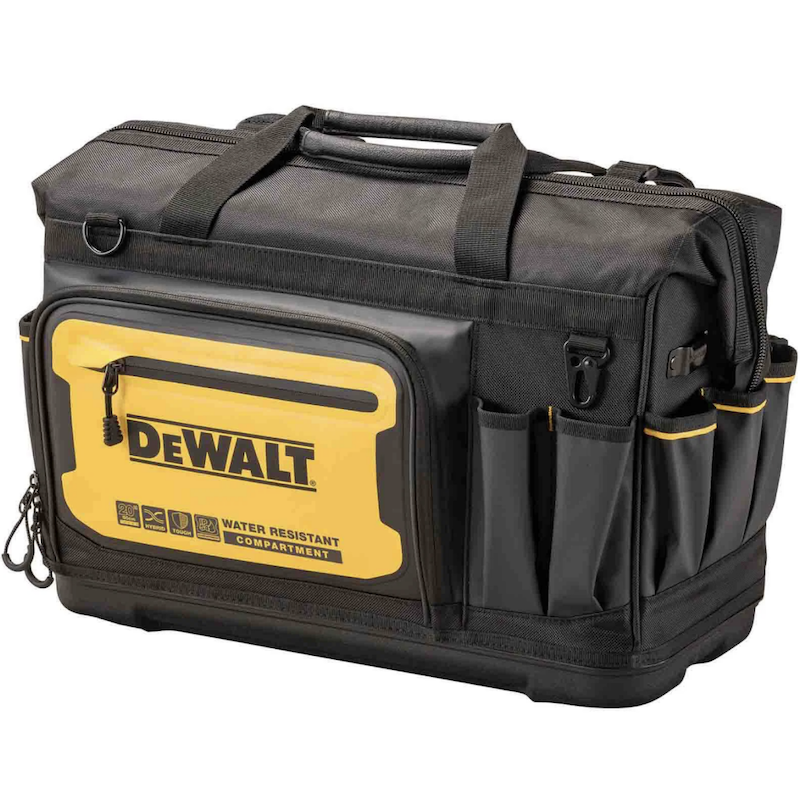
The Ultimate Guide to Choosing the Best Tool Bag for Your Needs
Introduction
A reliable and well-organized tool bag is an essential companion for anyone working in construction, carpentry, plumbing, or any other trade that requires the use of tools. However, with a wide array of options available, selecting the best tool bag for your specific needs can be a daunting task. In this comprehensive guide, we will explore the factors to consider when choosing a tool bag, the different types and designs available, the organizational features, the durability and material considerations, and the additional functionalities that can enhance the utility of a tool bag.
Part 1: Factors to Consider When Choosing a Tool Bag
Level 1: Purpose and Usage
Understanding the specific purpose and usage of the tool bag is crucial. Whether for heavy-duty construction work, daily maintenance tasks, or occasional DIY projects, the intended usage will determine the size, capacity, and overall sturdiness required.
Level 2: Portability and Accessibility
Consider the need for portability and ease of access to the tools. A tool bag should facilitate convenient transportation while providing quick and easy access to the tools and equipment without the hassle of rummaging through a cluttered bag.
Part 2: Types and Designs of Tool Bags
Level 1: Open Tote Bags
Open tote bags provide easy accessibility and visibility to tools, allowing for quick identification and retrieval. These are suitable for larger tools and items without the need for intricate organization.
Level 2: Backpack Tool Bags
Backpack tool bags offer hands-free carrying and even weight distribution. They are ideal for professionals who need to transport a variety of tools and equipment over longer distances or uneven terrain.
Part 3: Organizational Features of Tool Bags
Level 1: Pockets and Compartments
Numerous pockets and compartments are essential for keeping tools organized and readily accessible. Different-sized pockets and dividers allow for sorting and storing a variety of tools, accessories, and hardware.
Level 2: Top-Opening vs. Wide-Mouth Design
Consider whether a top-opening or wide-mouth design would better suit your organizational preferences. Top-opening bags have better organization capabilities, while wide-mouth designs provide easier access and visibility to larger tools and items.
Part 4: Durability and Material Considerations
Level 1: Construction and Durability
Look for a tool bag constructed from durable materials with reinforced stitching and strong zippers. A rugged construction ensures the bag can withstand the rigors of a demanding work environment.
Level 2: Water-Resistant and Abrasion-Resistant Materials
Water-resistant and abrasion-resistant materials provide protection for tools against the elements and reduce wear and tear, ensuring longevity and protecting the bag’s contents in various working conditions.
Part 5: Additional Functionalities in Tool Bags
Level 1: Integrated LED Lights
Some tool bags feature integrated LED lights, which can be incredibly useful when working in low-light conditions or dimly lit spaces, offering better visibility when searching for tools.
Level 2: USB Charging Ports
Modern tool bags may come with built-in USB charging ports, allowing users to recharge their electronic devices on the go, providing a convenient and practical feature for professionals who rely on electronic tools and devices.
Part 6: Ergonomics and Comfort Features
Level 1: Padded Shoulder Straps and Handles
Ergonomic design elements, such as padded shoulder straps and handles, help distribute the weight of the tool bag evenly, reducing strain and discomfort when carrying heavy loads over long distances or periods, promoting better posture and minimizing the risk of fatigue and injury.
Level 2: Adjustable Straps and Back Support
Tool bags with adjustable straps and back support offer customization for individual comfort and body types, creating a more ergonomic carrying experience and minimizing the physical strain associated with transporting tools and equipment.
Part 7: Security and Theft Prevention
Level 1: Locking Mechanisms
For professionals who manage high-value tools and equipment, tool bags with locking mechanisms provide added security, preventing unauthorized access and deterring theft, providing peace of mind when the bag is left unattended on a job site or in public spaces.
Level 2: RFID-Blocking Technology
Some advanced tool bags feature RFID-blocking technology, safeguarding valuable tools from electronic theft and unauthorized scanning, ensuring the security of electronic devices and preventing data theft, particularly for professionals using sensitive electronic tools.
Part 8: Warranty, Customer Support, and User Reviews
Level 1: Quality Assurance
Consider the manufacturer’s warranty and customer support offerings, as well as the overall reputation and reliability of the brand. A solid warranty and responsive customer support reflect the manufacturer’s commitment to quality and customer satisfaction.
Level 2: User Reviews and Recommendations
Before making a final decision, research user reviews and seek recommendations from colleagues and industry professionals. Insights from real users can provide valuable perspectives on the durability, organizational features, comfort, and overall performance of various tool bags, aiding in informed decision-making.
Part 9: Budget Considerations and Value for Money
Level 1: Cost versus Quality
When evaluating tool bags, it’s important to balance cost with the quality and features offered. While a more budget-friendly option may be appealing, it’s essential to ensure that the chosen tool bag provides the necessary durability, functionality, and organizational capabilities for the intended use.
Level 2: Long-Term Investment
Viewing a tool bag as a long-term investment rather than a short-term purchase can justify spending a bit more on a higher-quality, durable bag. A well-constructed tool bag with advanced features and a longer lifespan can provide superior value for money over time, reducing the need for frequent replacements or repairs.
Part 10: Personalization and Customization Options
Level 1: Custom Branding and Embroidery
For professionals or businesses, the ability to personalize tool bags with custom branding, embroidery, or logos can enhance brand visibility, professionalism, and a sense of team identity, while also deterring theft and ensuring easy identification of company-owned equipment.
Level 2: Modular and Interchangeable Components
Tool bags with modular and interchangeable components offer customization and flexibility, allowing users to adapt the bag to their specific needs by adding or removing compartments, pouches, or tool holders, providing a tailored solution for individual work requirements.
Part 11: Specialized Tool Bags for Unique Requirements
Level 1: Electrician Tool Bags
Electrician tool bags are designed with specialized features such as insulated pockets, cable and wire management systems, and protective compartments for electrical tools, catering specifically to the needs and safety requirements of electricians.
Level 2: Maintenance and HVAC Tool Bags
Tool bags designed for maintenance and HVAC (heating, ventilation, and air conditioning) professionals offer compartments and pockets tailored for specialized tools, diagnostic equipment, and maintenance supplies, increasing efficiency and organization in these industries.
Part 12: Eco-Friendly and Sustainable Options
Level 1: Recycled and Sustainable Materials
For environmentally conscious professionals, tool bags made from recycled and sustainable materials provide a greener alternative. Reducing the environmental impact of production and promoting sustainability in the tool bag industry.
Level 2: Environmental Certifications
Some tool bag manufacturers prioritize environmental stewardship by obtaining certifications and adhering to eco-friendly manufacturing processes. Ensuring that their products align with recognized environmental standards and regulations.
Selecting the best tool bag involves a comprehensive assessment of various criteria such as purpose, type, organizational features, durability, additional functionalities, ergonomics, security, budget, personalization options, specialized needs, and sustainability. Carefully evaluating these factors, individuals and professionals can make informed decisions. Ensuring that the chosen tool bag meets their unique requirements and provides optimum functionality, comfort, durability, and security.
Conclusion
A well-chosen tool bag is an indispensable asset to any tradesperson or DIY enthusiast, enabling efficient organization, transportation, and access to essential tools. By considering the purpose, type, organizational features, durability, and additional functionalities when selecting a tool bag, individuals can ensure they have the ideal solution to suit their specific needs. The best tool bag will enhance productivity, convenience, and overall satisfaction in tool management and on-site work.
By incorporating these crucial factors into the decision-making process, individuals can select a tool bag. It not only meets their immediate needs but also provides long-term value, durability, convenience, and ergonomic comfort, ensuring an optimal tool-carrying experience in any professional or DIY setting.
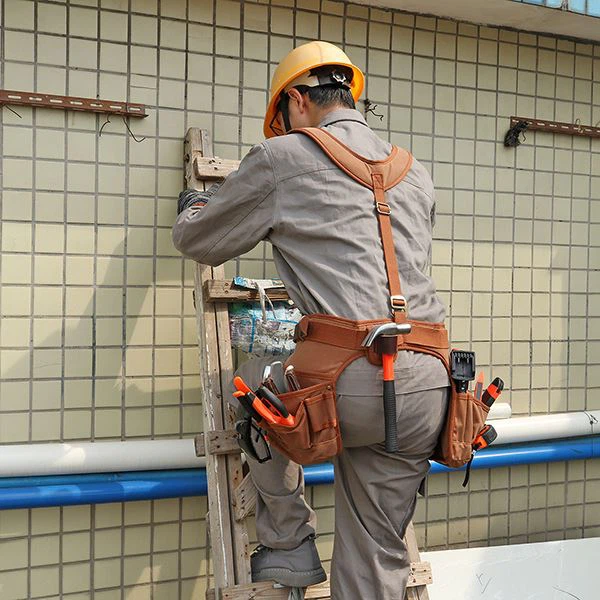
Carpenter Tool Belt: Efficiency and Organization on the Go
Introduction
A carpenter tool belt serves as an indispensable accessory, providing convenience and efficiency for professionals and DIY enthusiasts alike. These versatile belts are designed to keep essential tools and supplies within reach, enhancing productivity and streamlining tasks. In this definitive guide, we will explore the features, benefits, and selection considerations for carpenter tool belts, shedding light on the paramount role they play in the construction and woodworking realms.
Part 1: Understanding the Importance of a Carpenter Tool Belt
A carpenter tool belt serves as a vital component of a professional’s toolkit, providing a platform for easy access to essential tools and supplies during a multitude of tasks.
Level 1: The tool belt promotes efficiency by eliminating the need for constant trips back and forth to a toolbox, allowing workers to keep their tools within arm’s reach at all times.
Level 2: By offering a hands-free solution for tool organization, the belt enables carpenters to focus on the task at hand, reducing unnecessary downtime and enhancing the overall workflow efficiency.
Part 2: Key Features and Components of Carpenter Tool Belts
Carpenter tool belts are designed with various features and components to accommodate different tool requirements and working preferences.
Level 1: Common components of tool belts include pouches, holders, loops, and pockets, offering designated spaces for hammers, screwdrivers, pliers, measuring tapes, and other frequently used tools.
Level 2: Some tool belts are equipped with built-in hammer holders, tape measure clips, drill bit holders, and utility knife pockets, providing additional organization and accessibility for specific tools commonly used by carpenters.
Part 3: Material and Durability Considerations
The durability and longevity of a tool belt largely depend on the quality of materials used in its construction, making material selection of utmost importance.
Level 1: Tool belts are often made from leather, nylon, or polyester, each offering its unique advantages in terms of strength, longevity, and resistance to wear and tear.
Level 2: Premium leather tool belts are sturdy and durable, with the ability to withstand heavy use, while nylon and polyester belts are lightweight and moisture-resistant, making them suitable for various job site conditions.
Part 4: Comfort and Fit for All-Day Wear
An essential aspect of a carpenter tool belt relates to its wearability and comfort, especially for tradespeople who spend extended hours on the job.
Level 1: Modern tool belt designs feature padded waistbands and adjustable straps to offer a comfortable fit for a wide range of body types, reducing fatigue and promoting prolonged wearability.
Level 2: Ergonomic features such as padded suspenders and breathable materials contribute to minimized strain on the body, making the tool belt an indispensable and ergonomic accessory for carpenters working on long shifts.
Part 5: Customization and Modular Tool Belt Systems
Modular tool belt systems offer carpenters the flexibility to customize their tool-carrying solutions, catering to individual tool preferences, job requirements, and personal comfort.
Level 1: Modular tool belts allow for the addition, removal, and reconfiguration of pouches, holders, and accessories, enabling users to adapt the belt to a specific task or working environment.
Level 2: The modularity of these systems facilitates the organization of tools based on workflow requirements, resulting in personalized solutions for different trades and job site demands, ensuring optimum efficiency and organization.
Part 6: Selecting the Right Carpenter Tool Belt for the Job
Factors such as trade specialization, task requirements, and personal preferences play a critical role in determining the most suitable tool belt for a carpenter.
Level 1: Considerations such as tool capacity, weight distribution, and organization convenience shape the selection process, ensuring that the chosen belt meets the specific needs of the user.
Level 2: It is crucial to research and compare various tool belt models, considering aspects such as pocket and pouch layouts, material durability, comfort features, and adjustability, to make an informed decision that aligns with the user’s unique job demands and working environment.
Part 7: Maintenance and Care for Carpenter Tool Belts
Proper maintenance and care are vital for ensuring the longevity and functionality of a carpenter tool belt, safeguarding its performance and durability in demanding work environments.
Level 1: Regular cleaning and maintenance, including the removal of debris and dirt, as well as the occasional conditioning of leather belts, help preserve the integrity of the materials and components, extending the lifespan of the tool belt.
Level 2: Additionally, inspecting the belt for wear, checking stitching and seams, and repairing or replacing worn-out components as needed can prevent premature degradation and maintain the belt’s structural integrity, supporting its long-term usability on the job site.
Part 8: Specialized Tool Belts for Unique Carpentry Needs
Specialized tool belt designs cater to unique carpentry tasks and trade requirements, offering tailored tool organization solutions for specialized applications and working environments.
Level 1: Task-specific tool belts are available for various trade disciplines, such as framing, finish carpentry, electrical work, and woodworking, providing optimized tool layouts and features tailored to the demands of each trade.
Level 2: These specialized tool belts may include features like tool-specific pockets, magnetic components, and reinforced holders, providing the necessary organization and accessibility required for the tools and supplies essential to each specific trade.
Part 9: The Evolution and Future of Tool Belt Design
As technology and user needs evolve, tool belt designs continue to advance, incorporating innovative materials, ergonomic features, and technology-driven enhancements to meet the evolving demands of modern trade professionals.
Level 1: Advancements in material science and fabrication techniques contribute to the development of lighter, more durable, and weather-resistant tool belt materials, enhancing performance and user comfort on the job site.
Level 2: The integration of technology-driven features, such as RFID tracking, modular tool holders, and personal safety devices, represents a potential direction for future tool belt designs, aiming to improve tool management, task efficiency, and worker safety in dynamic job site environments.
Part 10: Evaluating User Feedback and Reviews
User feedback and reviews offer valuable insights into the practicality, durability, and performance of different tool belt models, providing firsthand accounts of their suitability for various tasks and job site conditions.
Level 1: Prioritizing user feedback enables carpenters to gain an understanding of real-world experiences and potential considerations in selecting a tool belt that aligns with their specific needs and expectations.
Level 2: By weighing user testimonials and recommendations, individuals can make informed decisions that address their unique workflow requirements, helping ensure the chosen tool belt meets their expectations for functionality, comfort, and durability.
Conclusion
A carpenter tool belt serves as an essential accessory, offering convenience, efficiency, and organization for professionals and enthusiasts in the construction and woodworking industries. By understanding the key features, material considerations, wearability, customization options, and trade-specific requirements, individuals can select a tool belt that aligns with their unique needs, promoting enhanced work efficiency, comfort, and task performance in their daily operations. As an indispensable and practical tool-carrying solution, the carpenter tool belt continues to play a pivotal role in empowering tradespeople with the organizational advantage and accessibility needed for optimal task execution.
In conclusion, carpenter tool belts offer a critical platform for organization, efficiency, and convenience in the construction and woodworking trades. By considering key factors such as material durability, wearability, customization options, trade-specific requirements, maintenance needs, and specialized tool belt designs, carpenters can make informed decisions and select a tool belt that aligns with their unique needs, promoting enhanced work efficiency, comfort, and task performance. As an indispensable and practical tool-carrying solution, the carpenter tool belt continues to play a pivotal role in empowering tradespeople with the organizational advantage, accessibility, and task-specific functionality needed for optimal task execution.

